Welcome to the Saale-Unstrut region in Germany! Here you’ll find a lush land of rolling vineyards, historic towns, and river valleys that exude rustic charm. Whether you’ve arrived here seeking a comprehensive travel guide or simply some insider knowledge on the best things to do, this introduction will get you started on the right foot. With its rich wine culture, centuries-old castles, and serene landscapes, Saale-Unstrut offers a blend of relaxation and discovery you won’t soon forget.
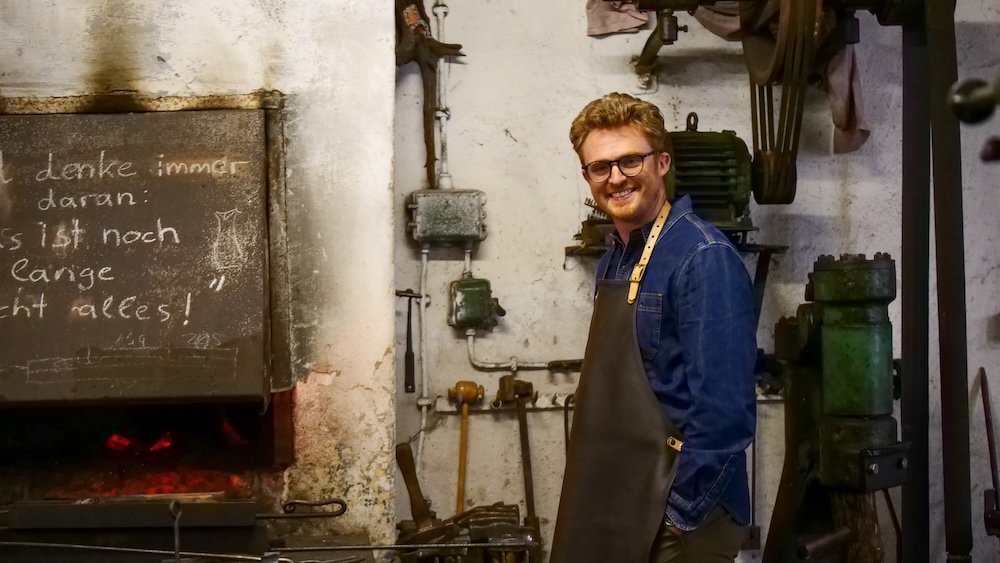
Travel planning can be overwhelming. You may worry about missing out on hidden gems or feel uncertain about navigating smaller German towns if you’re not fluent in the language. Perhaps you’re concerned about finding accommodations that match your style and budget. Or maybe you’re unsure whether it’s better to rent a car or rely on public transport. We get it—it’s tough to sift through endless online reviews and conflicting information. This travel guide aims to clarify those details. So, you’ll be well-prepared and confident in your choices.
Our Travel Video From Germany on Samuel and Audrey Channel: Nomadic Samuel + That Backpacker as hosts
Why Saale-Unstrut?
Who is this guide for? Anyone who’s curious about the Saale-Unstrut region, from solo backpackers to families, from wine aficionados to casual day-trippers. It’s for the adventurer who craves scenic hikes and the culture-seeker who loves a good museum or historic building. It’s also for the foodie looking to indulge in local cuisine, or the traveler who wants to blend relaxation with exploration.
Saale-Unstrut stands out as a destination where wine traditions meet historical narratives. It is where romantic hillsides meld with bustling local markets, and where the charm of small-town Germany invites you to slow down. Ready to begin? Let’s jump in!
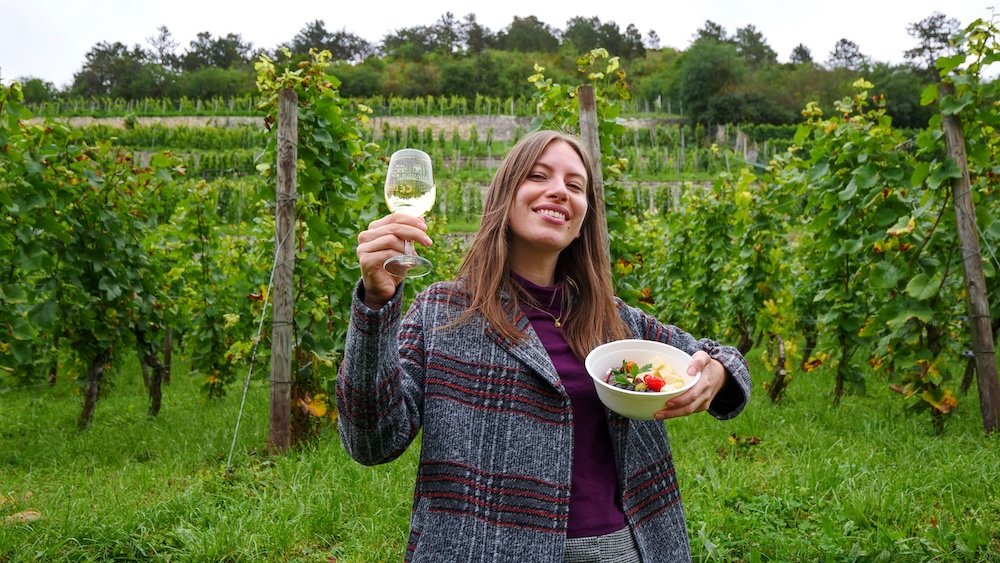
Top 10 Things To Do in Saale-Unstrut, Germany For Visitors
Saale-Unstrut is often praised for its scenic river valleys, centuries-old vineyards, and cozy towns that sparkle with authentic German charm. To guide you through the region’s best offerings, we’ve compiled ten must-do experiences.
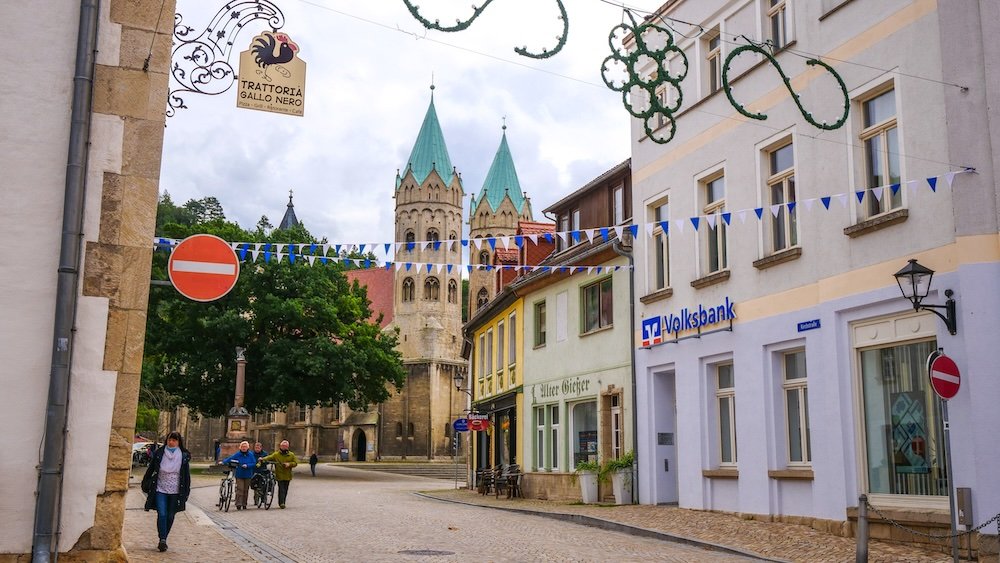
1. Exploring the Town of Freyburg on Foot
Freyburg is a picture-perfect place to start your Saale-Unstrut adventure. The town’s winding streets lead you past half-timbered houses, local bakeries, and quiet courtyards that feel like a glimpse into old-world Germany. Strolling here is an invitation to slow down and observe the subtle beauty in everyday life—like the smell of freshly baked bread drifting through open windows. You can easily spend a morning exploring the town center, snapping photos of its historic facades. If you’re lucky, you might stumble upon a weekend market bustling with produce and local crafts. Freyburg’s laid-back ambiance is the perfect introduction to Saale-Unstrut’s relaxed yet culturally rich atmosphere.
- Highlights: Quaint architecture, friendly locals, and charming markets.
- Walking Tip: Wear comfortable shoes because cobblestone streets are the norm.
- Nearby Scenic Spot: The riverfront area offers peaceful views of the Saale.
Tip: Pop into a local bakery early in the day for fresh pastries you won’t forget.
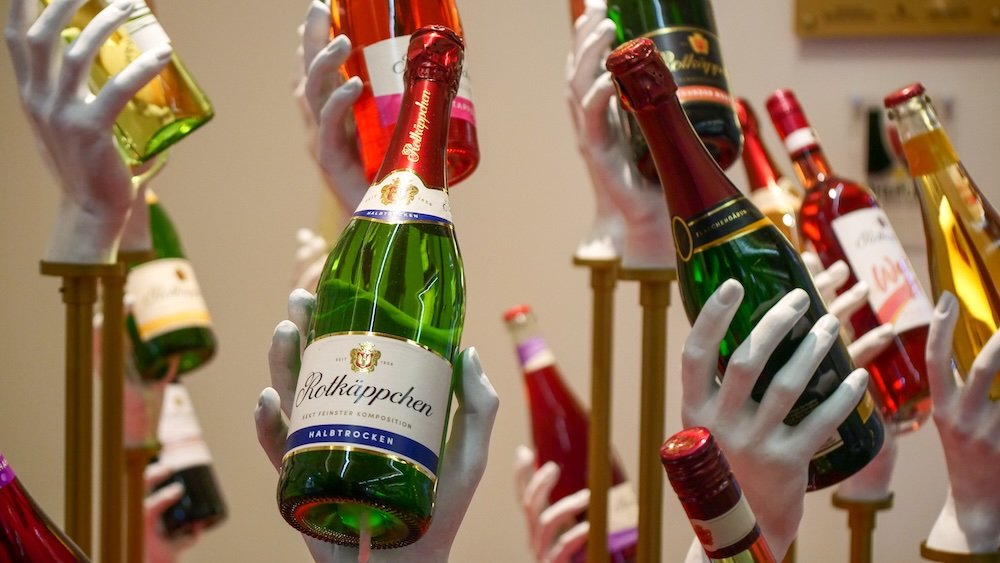
2. Visiting Rotkäppchen-Mumm
Rotkäppchen-Mumm is a legendary sparkling wine producer in the region, and touring the facility feels like stepping into a time capsule of German winemaking. The aroma of fermenting grapes lingers in the air, setting the stage for an in-depth look at how these bubbly wines are crafted. Guides share the brand’s storied history, dating back to the 19th century, and highlight the traditional methods still used today. You’ll see massive wooden barrels and learn about the delicate secondary fermentation process that gives sparkling wines their effervescence. The best part? Tasting sessions let you sip on varieties ranging from crisp and dry to fruity and sweet. Few experiences capture the essence of Saale-Unstrut’s wine culture like Rotkäppchen-Mumm.
- Location: Nestled in Freyburg, making it easy to combine with a town walk.
- Tour Options: Basic cellar tours or premium tastings for enthusiasts.
- Photography: Flash might be limited in certain cellar areas, so check beforehand.
Tip: Book ahead during peak travel seasons to secure a tasting slot.
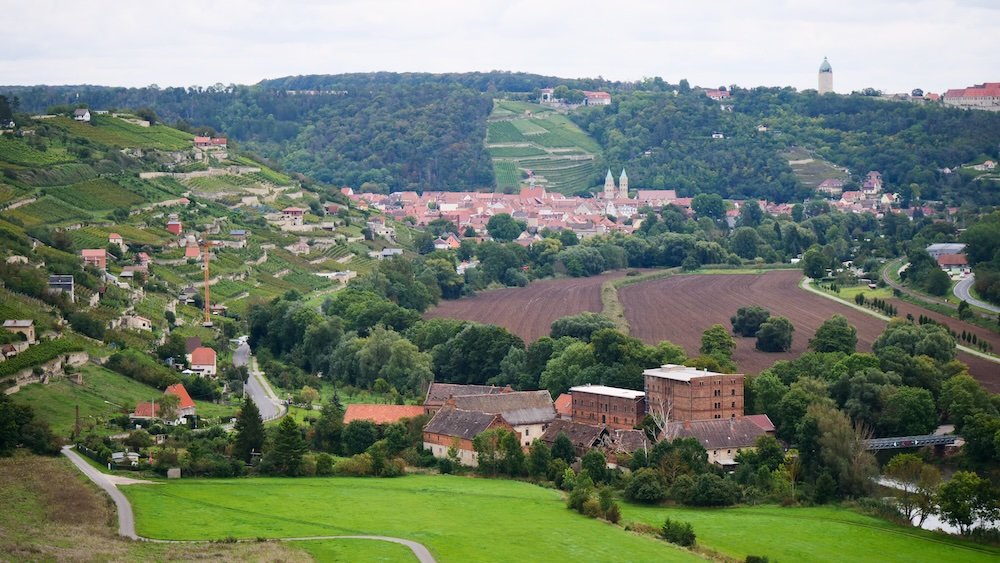
3. Views from the Abbey Church of St. Boniface
The Abbey Church of St. Boniface is perched on higher ground, granting sweeping views of the surrounding vineyards and valleys. Stepping inside, you’ll encounter an atmosphere of peaceful reverence that contrasts with the lively world outside. The structure itself is an architectural gem, showcasing Romanesque and Gothic influences harmoniously. After you’ve admired the church interior, step onto its grounds to soak in the Saale-Unstrut panorama. The patchwork of vineyards, rolling hills, and distant rooftops is a photographer’s dream. It’s also a contemplative space, perfect for reflecting on your journey so far.
- Architectural Style: A blend of Romanesque foundations and later Gothic additions.
- Best Lighting: Late afternoon when the sun casts a soft glow over the valley.
- Nearby Trails: Short walking paths around the church offer varied vantage points.
Tip: Carry binoculars if you’re into birdwatching—this elevated spot often features hawks and other raptors circling overhead.
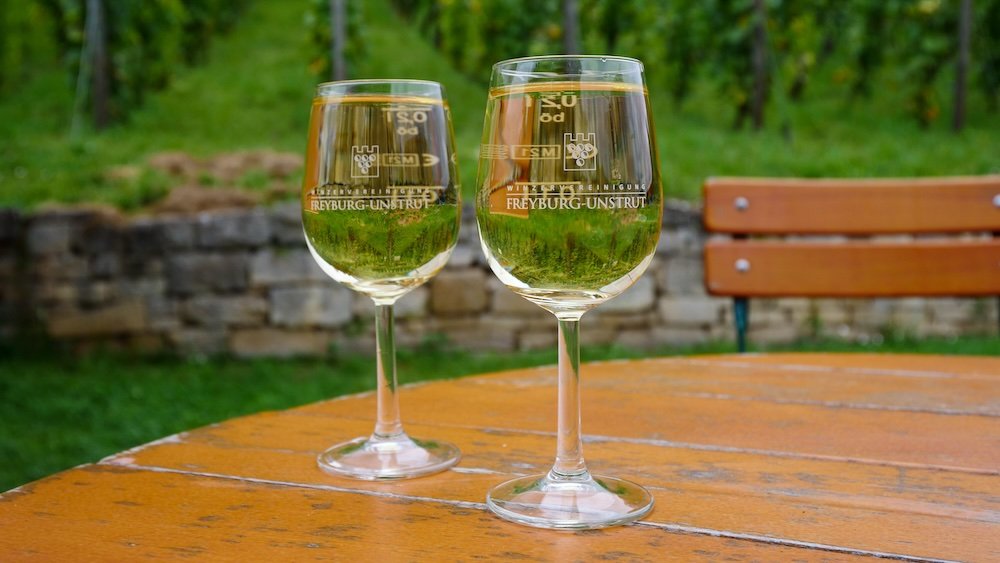
4. Herzoglicher Weinberg Wine Picnic
Imagine leisurely sipping fine wine amid neat rows of grapevines, sunlight dancing off your glass. That’s the Herzoglicher Weinberg Wine Picnic in a nutshell. This experience combines the natural beauty of Saale-Unstrut with the refined pleasures of local wine tasting. You’ll pick up a picnic basket loaded with regional specialties—fresh bread, cheeses, cured meats, and of course, a bottle of Saale-Unstrut wine. Then you find a cozy spot among the vines to savor both the flavors and the tranquil surroundings. It’s a moment that perfectly captures why this region is celebrated as a wine-lover’s paradise.
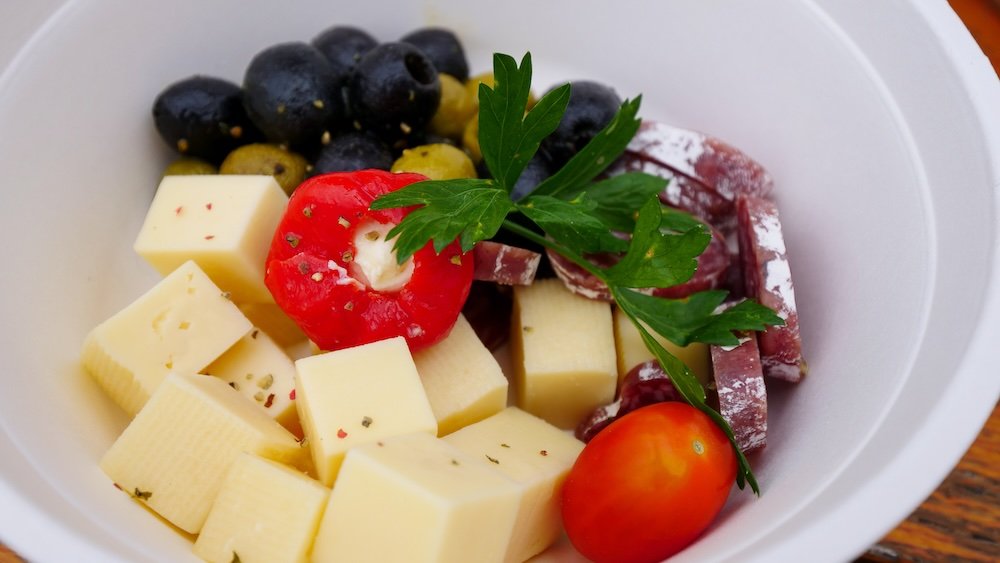
- Reservation: Must be booked in advance, especially during harvest season.
- Food Pairings: Expect artisanal cheeses that highlight the wine’s unique terroir.
- Duration: Usually a leisurely two to three hours.
Tip: Bring a small blanket for added comfort while you unwind between the rows of grapes.
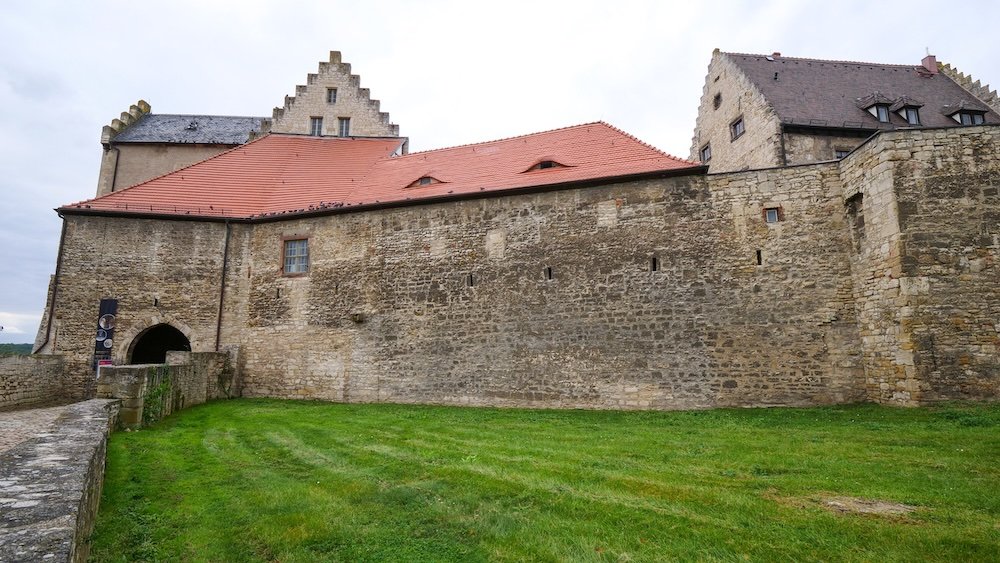
5. Neuenburg Castle
Neuenburg Castle towers above Freyburg, an imposing fortress that once guarded strategic trade routes. Today, it offers a journey through medieval times with exhibits showcasing weaponry, tapestries, and local aristocratic lore. Walking the castle grounds, you can almost hear echoes of knights practicing their jousts in the ancient courtyard. The castle’s museum is well-curated, blending interactive displays with original artifacts to keep visitors engaged. Outside, the panoramic terrace offers a vantage point where you can see for miles—vineyards, rolling hills, and the snaking river. Neuenburg Castle is both a lesson in history and a feast for the senses.
- Guided Tours: Enhance your visit with a knowledgeable guide who brings history to life.
- Family-Friendly: Kids enjoy exploring the fortress walls and secret passageways.
- Café Stop: The on-site café offers light meals and refreshments.
Tip: Check for medieval-themed events like reenactments or special nights that animate the castle with historical flair.
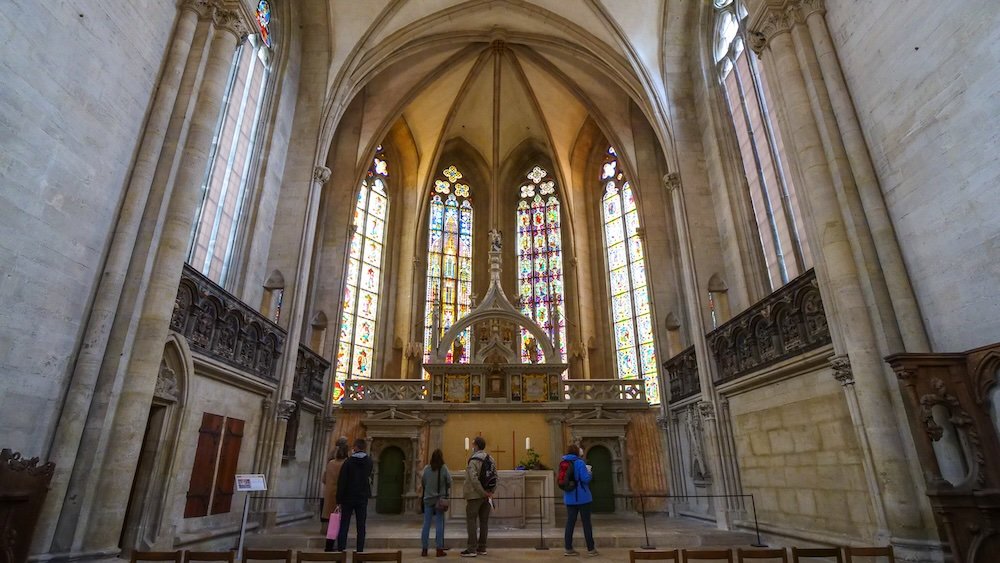
6. Naumburg Cathedral
Naumburg Cathedral is a UNESCO World Heritage site known for its stunning Gothic architecture and remarkable stone sculptures. It stands as a spiritual and cultural beacon in the Saale-Unstrut region. Inside, you’ll find the famous 13th-century statues of the cathedral’s founders, each intricately carved to capture human emotion. Wandering through the vaulted interiors, it’s easy to feel a deep sense of awe, as if the centuries of devotion here still resonate. Outside, manicured gardens and cloister areas offer a serene atmosphere for reflection. Visiting the cathedral provides a window into the craftsmanship and religious fervor that shaped medieval Germany.
- Admission Fees: Vary; consider purchasing a combo ticket if you plan to explore other local landmarks.
- Photography: Generally allowed without flash, but check signage for restrictions.
- Tourist Information: An adjacent visitor center often hosts special exhibits.
Tip: Arrive early to avoid large tour groups and savor the hush of the cathedral halls.
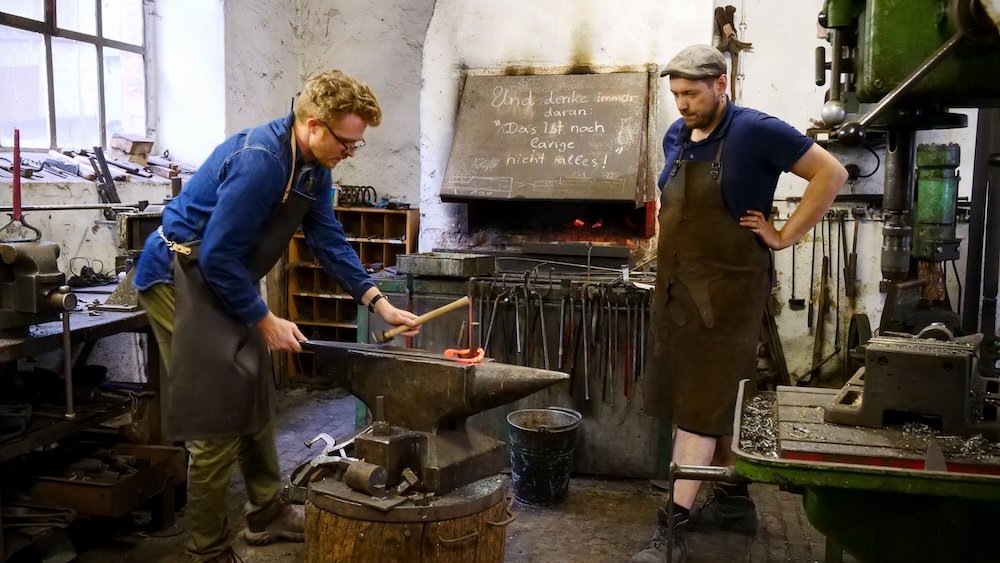
7. Forging Workshop
Ever wondered what it’s like to shape metal into a piece of art? A forging workshop in Saale-Unstrut could be your chance to find out. These workshops often take place in historic smithies, where the crackle of fire and the ring of hammer on anvil create an immersive atmosphere. Under expert guidance, you’ll learn the basics of blacksmithing, from heating the metal to shaping it into simple tools or decorative objects. Even if you’re a total beginner, there’s a thrill in producing something with your own hands. It’s a hands-on experience that gives you a tangible memento of your time here.
- Duration: Classes can last a few hours or span an entire day.
- Safety Gear: Aprons, gloves, and protective goggles are usually provided.
- Group Size: Smaller groups mean more personalized instruction.
Tip: Wear sturdy, closed-toe shoes because you’ll be working with heavy materials and high heat.
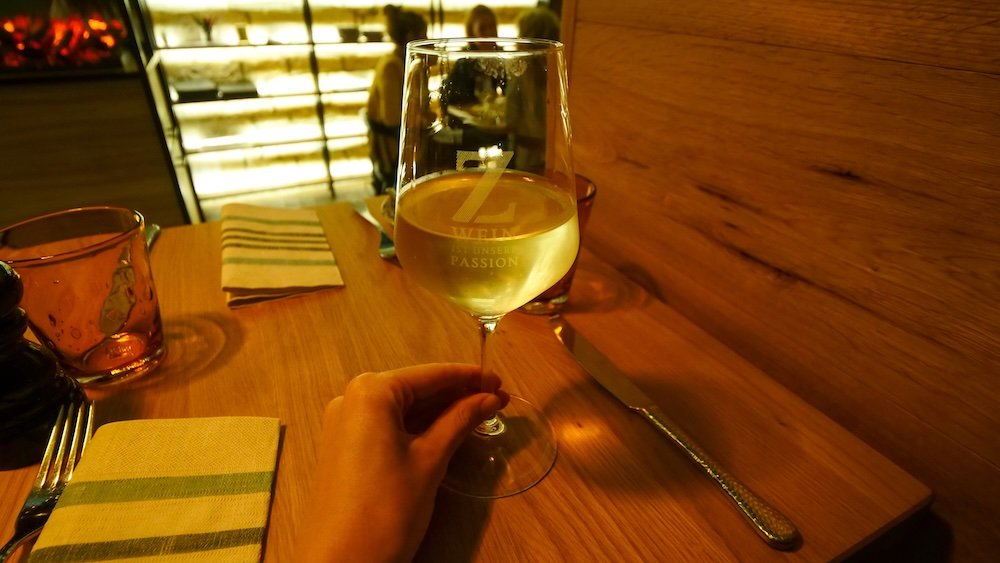
8. Freylich Zahn Wine Hotel
Freylich Zahn is more than just a hotel—it’s a testament to the region’s deep wine heritage. Located near picturesque vineyards, it offers rooms that blend modern comfort with rustic charm. The real star, however, is the on-site wine selection featuring both local favorites and curated international labels. Guests can indulge in wine-tasting sessions led by sommeliers who highlight pairing techniques and grape varieties. You might even get to tour the wine cellars that add a layer of authenticity to your stay. If you’re looking to immerse yourself fully in the Saale-Unstrut wine scene, Freylich Zahn is an excellent choice.
- Dining: The in-house restaurant pairs local ingredients with wines for an upscale culinary experience.
- Atmosphere: Quiet, refined, and steeped in wine culture.
- Accessibility: Check if they have parking or shuttle services for day trips to nearby attractions.
Tip: Ask about wine packages that include tastings and vineyard tours bundled with your room stay.
9. Canoeing Along the Rivers
If you crave a bit of aquatic adventure, a canoe trip along the Saale or Unstrut rivers is a must-try. Gliding through calm waters, you’ll pass scenic banks lined with reeds, occasional riverfront cottages, and stretches of unspoiled nature. It’s a fantastic way to see the region from a different perspective, especially if you’ve spent most of your time so far on land. Birdsong accompanies you, and you might spot kingfishers darting above the water’s surface. Many local outfitters offer rental services and route suggestions, so even beginners can have a smooth journey. This relaxed pace lets you soak in the tranquility of Saale-Unstrut in a whole new way.
- Guided vs. DIY: Decide if you want a guided tour or prefer to paddle at your own pace.
- Safety: Life jackets are typically provided, and children should wear them at all times.
- Season: Summer months are ideal for warmer water and clearer skies.
Tip: Pack a waterproof bag for electronics and snacks, just in case of splashes.
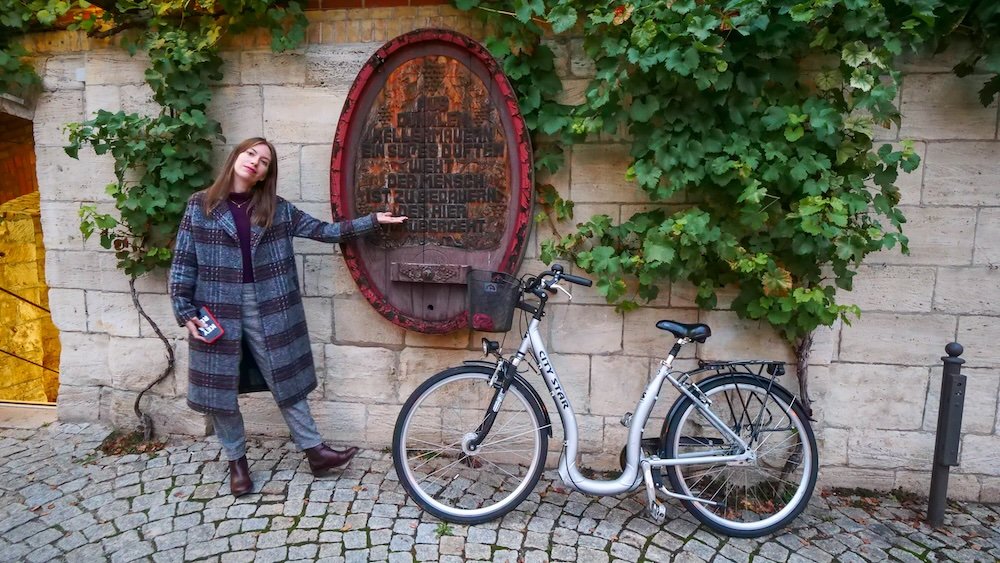
10. Biking Through Vineyards
Cycling through vineyards is another immersive way to experience the local terrain. Saale-Unstrut offers bike-friendly routes with gentle inclines and well-marked trails, making it easy for visitors of all fitness levels. As you pedal past rows of vines, you’ll smell the earth warming under the sun and catch glimpses of farmhouses in the distance. You can stop at scenic overlooks for photos or detour into small villages for a quick bite. This open-air exploration captures the spirit of Saale-Unstrut—unhurried, scenic, and rich in natural beauty. Cycling here can be both invigorating and meditative, a perfect balance for travelers who appreciate active adventures.
- Bike Rentals: Available in Freyburg, Naumburg, and other towns.
- Route Maps: Tourist information centers offer detailed cycling maps.
- Popular Stop: Pause at a roadside wine stand for a refreshing glass.
Tip: Bring a reusable water bottle—many cycling paths have refill stations or friendly inns happy to top you up.
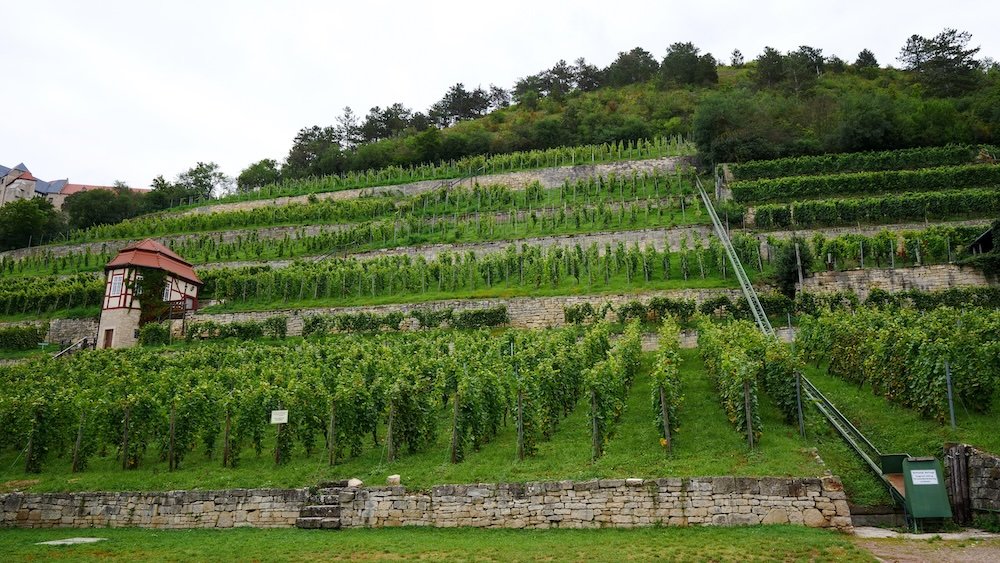
What To Eat and Drink in Saale-Unstrut, Germany
Food and drink in Saale-Unstrut go hand in hand with the region’s longstanding traditions. You’ll find hearty German staples as well as refined dishes that highlight local produce and, of course, world-class wines. This travel guide section aims to whet your appetite and help you decide what things to do—and taste—when you’re ready for a meal break in Saale-Unstrut.
Local Specialties
- Saale-Unstrut Wine: The undisputed star of the region, these wines—especially the white varietals—are known for their crisp freshness and nuanced flavors.
- Bratwurst: You’ll often see stands or small eateries selling these succulent sausages, sometimes with a local twist in spice mixes.
- Hearty Stews: Look for dishes featuring local vegetables, potatoes, and tender meats stewed in rich sauces.
Locals are proud of their agricultural heritage, so expect seasonal menus that showcase fresh ingredients. In spring, you might find dishes celebrating asparagus or wild garlic. In autumn, regional mushrooms and game meats often take center stage. Eating here is about savoring simple, robust flavors that reflect the countryside’s bounty.
Wine Culture
Wine tastings and vineyard tours are among the most popular things to do in Saale-Unstrut. The region’s cool climate contributes to wines that balance fruitiness with acidity, making them extremely food-friendly. Riesling, Silvaner, and Müller-Thurgau dominate the white wine scene, while Spätburgunder (Pinot Noir) shows off elegant berry tones in reds. Wineries often have on-site shops where you can taste and purchase bottles to bring home. Some even offer wine-pairing dinners, letting you experience the synergy between cuisine and local vintages. It’s a way to fully immerse yourself in the wine tradition that defines Saale-Unstrut.
Restaurants and Gaststuben
Many towns in the region have Gaststuben—cozy, family-run restaurants that serve as community hubs. Here you’ll find comfort food served in a relaxed, sometimes rustic setting. Menus typically feature a mix of grilled meats, seasonal vegetables, and the region’s signature wines or beers. Portions tend to be generous, so come hungry. If you prefer a more upscale dining experience, you can find fine-dining restaurants in bigger towns like Naumburg, each presenting modern interpretations of classic German dishes. Even at higher-end spots, the atmosphere usually remains warm and welcoming—perfect for a leisurely evening out.
Cafés and Bakeries
If you have a sweet tooth, exploring local cafés and bakeries is a must. German pastries, from pretzels to fruit tarts, are fresh and delicious. Some bakeries bake bread and rolls multiple times a day, ensuring you can always find a warm bite. Coffee culture is also alive and well, so don’t hesitate to pop into a café and enjoy a slice of cake alongside a cappuccino or latte. This is an ideal break during a busy day of sightseeing or winery-hopping.
Regional Drinks Beyond Wine
Though wine reigns supreme, don’t overlook other beverages in Saale-Unstrut. Local breweries sometimes produce craft beers that pair beautifully with hearty German fare. You can also find apple ciders and non-alcoholic juices pressed from local orchards. If you’re feeling adventurous, check out fruit brandies—distilled spirits made from cherries, plums, or pears. Each sip can be a small revelation, showcasing yet another layer of the region’s artisanal culture.
Practical Tips for Foodies
- Budget: While fine-dining options exist, most meals are moderately priced, especially in smaller towns.
- Reservations: Not always necessary, but recommended for higher-end or popular spots.
- Dietary Restrictions: Vegetarian and gluten-free choices can be found, but it’s wise to check menus in advance.
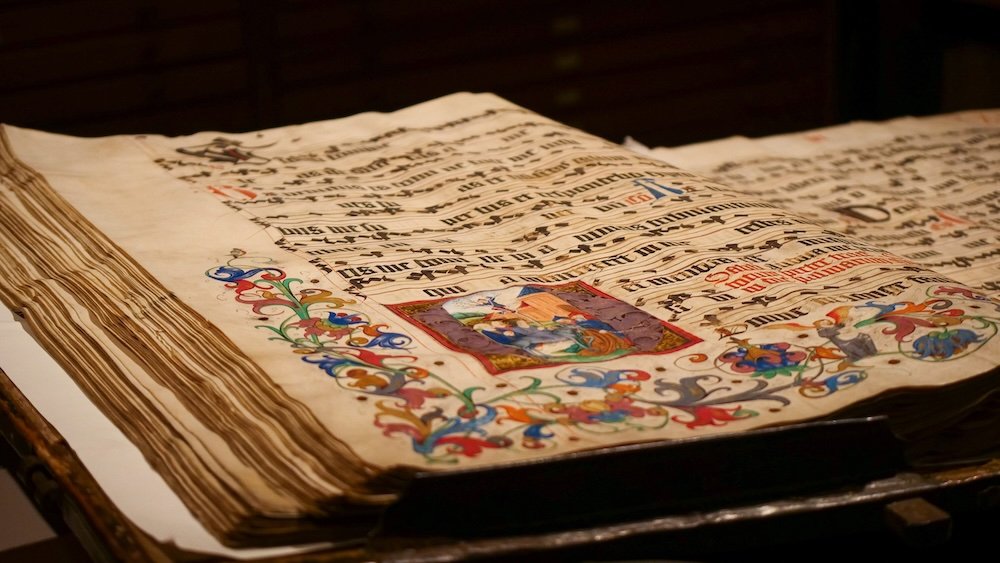
Tours For Visitors To Saale-Unstrut, Germany
Sometimes the easiest way to discover a new place is by letting an expert lead you. In Saale-Unstrut, tours offer you the chance to delve deeper into local culture, history, and natural beauty. This travel guide section highlights a range of guided experiences.
Wine Tours
Wine tours are an obvious favorite in this region. You can join group excursions that pick you up in Freyburg or Naumburg and shuttle you between multiple wineries. Along the way, local guides explain the terroir, grape varieties, and unique characteristics of Saale-Unstrut vintages. Some tours also include food pairings, allowing you to taste wines with cheeses, charcuterie, or even sweet pastries. These experiences often wrap up at scenic viewpoints where you can sip a final glass while admiring rolling hills and tidy vineyards. If you’re a wine enthusiast, dedicating an entire day to these tours can be unforgettable.
Quick Facts
- Duration: Half-day to full-day tours available.
- Transport: Typically by minivan or bus.
- Booking: Popular during harvest season, so reserve early.
Historical City Tours
For those drawn to architecture and stories of the past, historical city tours in places like Naumburg and Freyburg are a must. A local historian or passionate resident will guide you through medieval streets, pointing out details like Gothic doorways or 17th-century inscriptions. You’ll visit landmarks such as Naumburg Cathedral or Freyburg’s old town walls. While soaking in the sights, you’ll learn about the personalities who shaped the region—from bishops and noble families to modern community leaders. Many tours conclude at a local café or beer garden, rounding out the historical immersion with a social vibe.
Quick Facts
- Language: Tours often offered in both German and English.
- Special Interest: Some focus on architecture, others on religious history.
- Time: Generally 1–2 hours, good for an afternoon stroll.
Guided Nature Walks
The Saale-Unstrut region isn’t just about wine and architecture; it’s also a haven for nature lovers. Guided walks through river valleys or forested trails offer a slow, mindful way to connect with the landscape. Knowledgeable guides identify native plants, birds, and even geological features. If you’re lucky, you might spot wildlife like deer or foxes darting through the underbrush. In some areas, interpretive signs highlight conservation efforts, reflecting a growing commitment to protect local ecosystems. These walks can be a refreshing change if you’ve spent much of your trip in urban settings.
Quick Facts
- Difficulty Level: Options range from easy strolls to moderate hikes.
- Group Size: Often small, ensuring a personalized experience.
- Seasonal Changes: Spring flowers and autumn foliage each offer unique beauty.
Craft and Culinary Workshops
If you prefer hands-on experiences, look out for craft and culinary workshops. From blacksmithing sessions to bread-baking classes, Saale-Unstrut has creative activities for curious travelers. Spend a few hours learning about traditional methods, then try your hand at making something uniquely yours. Culinary workshops might walk you through making regional dishes or pairing wines with different courses. These tours often feel more personal, as you typically engage with local artisans who love sharing their craft. You’ll leave not just with new knowledge but possibly with something you’ve crafted or cooked yourself.
Quick Facts
- Availability: Check local event listings or tourism offices.
- Group Size: Usually intimate, with limited spots for deeper interaction.
- Duration: Workshops can last from half a day to a full day, depending on complexity.
Bike and Canoe Tours
For the active traveler, organized bike or canoe tours offer structured adventures without the guesswork. A guided bike tour might follow a scenic route through vineyards, while a canoe tour lets you paddle along tranquil river stretches. Both options often include stops at local attractions—like a vineyard for wine tasting or a riverside café. Tour operators supply gear, safety instructions, and route logistics, so you can focus on enjoying the scenery. It’s a winning combination of exercise, nature, and local exploration.
Quick Facts
- Equipment Provided: Bikes, helmets, canoes, life jackets.
- Guidance: Local experts ensure safe and scenic routes.
- Weather Contingent: Tours may be rescheduled if conditions are poor.
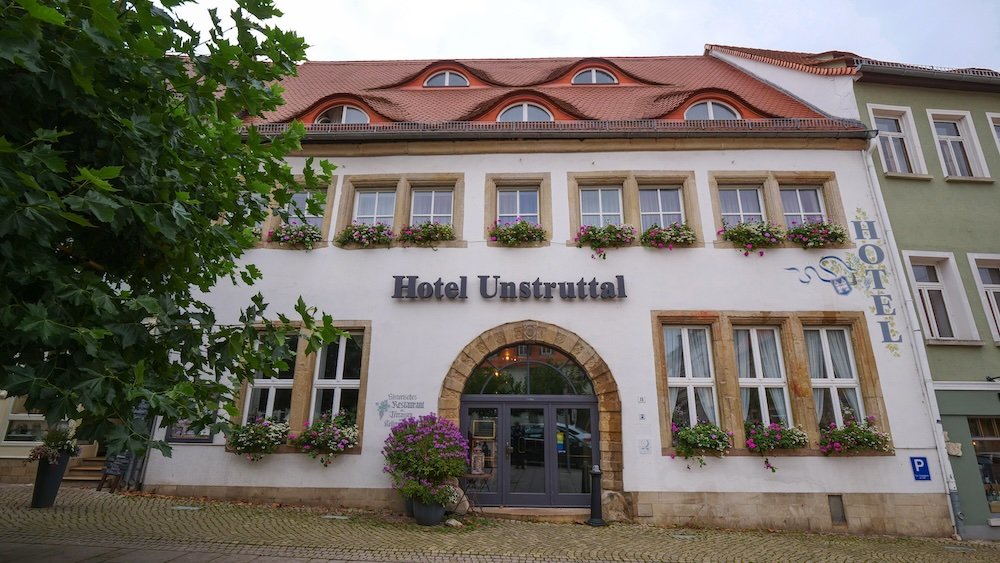
Saale-Unstrut Accommodations Guide: Hotels, Guesthouses and Hostels
Where you stay can set the tone for your entire visit. In Saale-Unstrut, accommodations range from elegant hotels steeped in local character to budget-friendly hostels that facilitate meetups with fellow travelers.
Hotels for Comfort and Style
If you crave convenience, modern amenities, and perhaps a dash of indulgence, hotels are an excellent choice. You’ll find options in Naumburg, Freyburg, and other main towns, often near top attractions like cathedrals or wine cellars. Many hotels pride themselves on blending historical architecture—think exposed timber beams and vaulted ceilings—with contemporary comforts like spa facilities, Wi-Fi, and in-house dining. Some even specialize in local wine themes, incorporating tastings or vineyard tours into their packages. Be sure to compare rates and read reviews, as prices can vary significantly depending on location, season, and included amenities.
- Upscale Perks: On-site restaurants, wellness centers, and curated tours.
- Central Location: Easily explore major attractions on foot or via short transit rides.
- Best For: Couples, families, or anyone wanting a hassle-free stay with premium services.
Guesthouses for Local Charm
Guesthouses, or Pensionen, offer a more intimate look at local life. Typically family-run, they provide a warm, welcoming atmosphere where hosts might share insider tips on the region’s hidden gems. Rooms are often cozy and decorated with personal touches, reflecting the owners’ style and heritage. Breakfasts can be a delightful affair, featuring homemade jams, fresh bread, and local cheeses. If you enjoy quieter settings and value personal interaction, a guesthouse can enrich your Saale-Unstrut experience in unique ways.
- Personal Connection: Interact directly with hosts who may recommend off-the-beaten-path things to do.
- Budget-Friendly: Often more affordable than hotels without sacrificing comfort.
- Best For: Solo travelers, small groups, or culture enthusiasts seeking authentic encounters.
Hostels for Budget and Social Vibes
Travelers watching their wallets might lean toward hostels, known for dorm-style rooms and community-driven spaces. While not as prevalent in Saale-Unstrut as in bigger German cities, the hostels you’ll find still deliver on social engagement. Common areas encourage travelers to swap stories, plan group outings, or share meals. It’s also an easy way to meet companions for day trips—maybe you’ll find a new friend to join a vineyard tour. While privacy levels vary (some hostels offer private rooms), the overall vibe is relaxed and communal.
- Key Advantages: Low cost, group atmosphere, potential for travel partnerships.
- Facilities: Basic kitchens, lounges, and sometimes laundry services.
- Best For: Budget-conscious travelers, backpackers, or those eager to mingle.
Booking Tips and Seasonal Considerations
- Peak Times: Summer months, especially during harvest and local festivals, see a surge in visitors. Book well in advance.
- Off-Peak Savings: Winter months can be quieter, and some places offer discounted rates.
- Location Matters: If you plan to rely on public transport, choose accommodations near bus or train stations for convenience.
Our Travel Video From Leipzig from Samuel and Audrey YouTube Channel: Nomadic Samuel & That Backpacker hosts
Day Trips From Saale-Unstrut, Germany
While Saale-Unstrut itself boasts countless things to do, venturing beyond the region can enhance your overall travel experience. Nearby towns, historical sites, and natural wonders await, each offering a unique slice of Germany’s culture. This travel guide section suggests a handful of memorable day trips you can take from your base in Saale-Unstrut.
1. Leipzig: Urban Vibrancy and Cultural Riches
Leipzig is about an hour away from much of the Saale-Unstrut area by car or train, making it a popular day trip. Often dubbed “The New Berlin,” this city bursts with creative energy, contemporary art, and a rich musical heritage. St. Thomas Church, where Johann Sebastian Bach once served as cantor, draws classical music enthusiasts from all over. You’ll also find eclectic neighborhoods brimming with street art, coffee shops, and independent boutiques. If museums are your thing, don’t miss the Museum of Fine Arts or the Grassi Museum complex. Leipzig’s dynamic contrasts—a modern skyline set against Baroque and Renaissance landmarks—will make your day spent here feel especially invigorating.
- Travel Time: Approx. 1 hour by train from Naumburg.
- Must-Try: Local specialty called Leipziger Lerche, a sweet pastry.
- Ideal For: Art lovers, museum-goers, and fans of vibrant city life.
2. Weimar: Cultural Heart of Germany
Weimar is synonymous with literary giants Goethe and Schiller, as well as the Bauhaus art movement. Strolling through its cobblestone streets, you’ll pass historic sites like Goethe’s House and the Schiller Museum, each brimming with artifacts from Germany’s literary golden age. The Bauhaus Museum showcases the revolutionary design principles that shaped modern architecture and art across the globe. If you crave a serene break, the Park an der Ilm is a lush expanse perfect for peaceful walks. Weimar’s intimate scale makes it ideal for a relaxed day trip steeped in intellectual and artistic history.
- Travel Time: Roughly 1 to 1.5 hours by train or car.
- Best Season: Spring or early autumn for mild weather and fewer crowds.
- Notable Cuisine: Try the hearty Thuringian dumplings with a local beer.
3. Halle (Saale): Art and Science Intertwined
Halle is another gem easily accessible from Saale-Unstrut, famous for its blend of classic architecture and forward-thinking innovation. Franckesche Stiftungen is a cultural hub that once functioned as an orphanage and educational institution. Today, it hosts museums, libraries, and programs that celebrate creativity and learning. If art is more your speed, head to the Kunstmuseum Moritzburg, housed in a former castle. This museum showcases everything from medieval altarpieces to modern art installations. Halle also boasts a lively market square dominated by a Gothic cathedral and the iconic Red Tower.
- Travel Time: Approximately 40–50 minutes by train from Naumburg.
- Unique Spot: The Halloren Chocolate Factory Museum for a sweet treat.
- Atmosphere: An interesting blend of medieval charm and contemporary flair.
4. Rudelsburg Castle Ruins and Bad Kösen
For history and nature in one trip, consider visiting Rudelsburg Castle Ruins near Bad Kösen. The ruins stand perched on a cliff overlooking the Saale River, offering breathtaking views. It’s a short hike to reach them, adding a mild adventure element to your day. Afterward, head to Bad Kösen, a spa town known for its saline springs and wellness treatments. A leisurely stroll through the town’s parks and along the riverfront can be the perfect counterbalance to your castle exploration. This day trip strikes a pleasing balance between active sightseeing and restorative relaxation.
- Travel Time: About 20–30 minutes from Freyburg by car.
- Hiking Level: Easy to moderate, with some steep sections near the castle.
- Highlight: Panoramic vistas perfect for photos or a picnic.
5. The Harz Mountains: Nature’s Playground
If you’re up for a slightly longer journey, the Harz Mountains to the northwest offer dramatic landscapes that contrast with Saale-Unstrut’s gentle hills. The region boasts hiking trails for all skill levels, from leisurely forest walks to challenging ascents up peaks like the Brocken. Quaint villages dot the area, featuring half-timbered houses reminiscent of a fairy tale setting. During winter, some parts turn into a hub for cross-country skiing and snowshoeing. If you love outdoor activities and don’t mind a 1.5 to 2-hour drive, the Harz Mountains can be a memorable addition to your itinerary.
- Outdoor Highlights: Waterfalls, dense forests, and mountain lakes.
- Seasonal Appeal: Beautiful foliage in autumn, cozy ski towns in winter.
- Plan Ahead: Weather can change quickly, so pack accordingly.
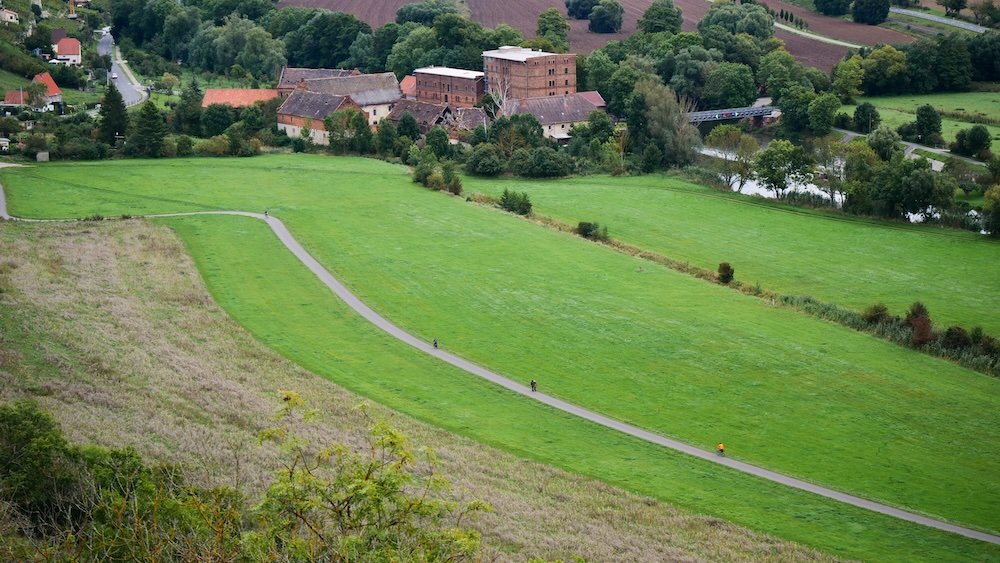
Saale-Unstrut Transportation Guide
Navigating Saale-Unstrut might feel daunting at first. Especially if you’re unfamiliar with the region’s smaller towns and rural highways. Fear not. This travel guide section breaks down practical things to do for getting around—whether you prefer trains, buses, rental cars, bikes, or your own two feet.
Trains and Regional Rail
Trains are often the most straightforward way to hop between larger towns like Naumburg, Freyburg, and neighboring cities like Halle or Leipzig. Deutsche Bahn operates frequent services, and tickets can be purchased at stations or online. Many smaller stations in Saale-Unstrut still retain a quaint, old-world charm, complete with vintage signage. While trains are generally punctual, keep an eye on schedules during public holidays or local events. If you plan multiple trips, consider a rail pass that might save money over individual tickets.
- Pros: Comfortable seats, scenic views, efficient for mid-range distances.
- Cons: Some rural stations may have limited facilities.
- Tip: Look for off-peak deals or group tickets if you’re traveling with friends or family.
Buses and Local Transport
Regional bus services fill in the gaps where trains don’t go, connecting outlying villages with main hubs. You’ll find timetables posted at bus stops, but it’s wise to double-check online for any route changes. Buses can be less frequent on weekends or holidays, so plan ahead. In many towns, local routes are short and perfect for quick errands—though for sightseeing, a combination of bus and walking might be required. This method is budget-friendly but less flexible than having your own car.
- Pros: Low cost, coverage of smaller villages.
- Cons: Limited service hours, especially on Sundays.
- Tip: Arrive at stops a few minutes early; buses are known for leaving right on time.
Rental Cars for Flexibility
Renting a car offers the freedom to explore Saale-Unstrut at your own pace. The road network is generally well-maintained, though some rural stretches can be narrow or winding. You’ll also find picturesque drives, especially along the river roads or near vineyards. Fuel stations are relatively easy to locate in larger towns, but plan carefully if you venture deep into the countryside. Parking in smaller towns is usually manageable, and some accommodations offer private parking. If you’re used to driving in busy cities, you’ll likely find Saale-Unstrut roads pleasantly calm.
- Pros: Total control over your itinerary, ideal for spontaneous detours.
- Cons: Rental costs, fuel expenses, and potential parking fees.
- Tip: Have some euro coins on hand for parking meters, as card payments aren’t always accepted.
Cycling and Walking
For many visitors, cycling and walking are not just modes of transport but integral things to do that connect them deeply with the region. Saale-Unstrut features well-marked cycle paths meandering through vineyards and along the riverbanks. Bike rentals can be found in towns like Freyburg or Naumburg, making it easy to plan half-day or full-day rides. Walking is equally delightful for shorter distances or exploring town centers with cobblestone streets and medieval architecture. Both options immerse you in the local landscape at a leisurely pace.
- Pros: Low-cost, eco-friendly, scenic immersion.
- Cons: Weather-dependent, limited speed and range.
- Tip: Carry a refillable water bottle; small cafes or inns are often willing to top it up.
Taxis and Ride-Sharing
While taxis are available in the region’s larger towns, they’re not as ubiquitous as in major cities. You might need to call ahead or ask your hotel to arrange one. Ride-sharing services like Uber or Free Now are less common, so don’t rely on them exclusively. Taxis can be expensive for longer distances, making them better suited for short rides, late-night returns, or airport transfers. Keep local taxi numbers handy if you plan on staying out late or need to get to a train station for an early departure.
- Pros: Convenient for occasional short journeys.
- Cons: Potentially high fares, limited availability in rural areas.
- Tip: Share the ride with friends to split the cost if possible.
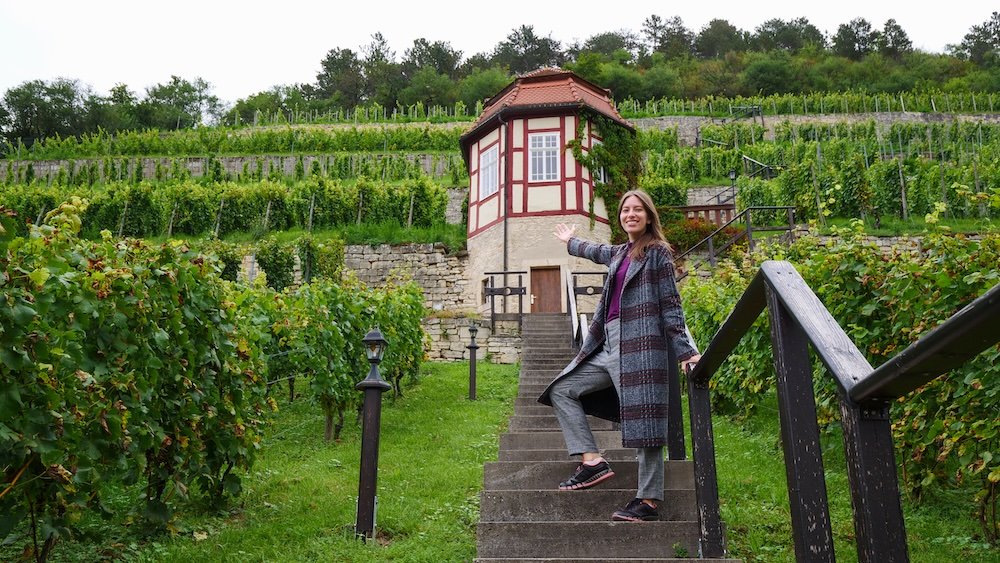
Saale-Unstrut Travel Guide: Conclusion
What makes Saale-Unstrut a memorable destination? Yes, it’s famed for its wines, medieval landmarks, and pastoral scenery, but there’s something more. There’s a warmth here—a mellow pace of life that invites you to engage with your surroundings in a deeper way.
Spend a morning walking the cobblestone streets of Freyburg, listening to church bells echo through the lanes. Then, in the afternoon, slip into a quiet courtyard with a glass of Riesling, letting your mind wander as the sun bathes the vineyards. Or maybe you’ll explore the hidden corners of Naumburg Cathedral, pondering the artistry of centuries-old sculptures. Each moment feels timeless, offering both sensory delight and a gentle sense of wonder.
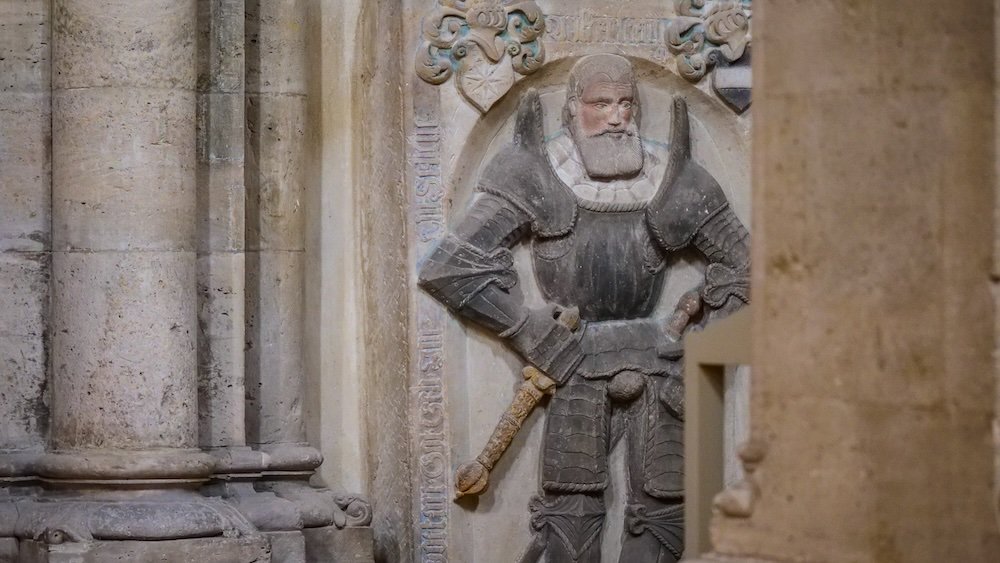
Final Thoughts
Beyond its physical beauty, Saale-Unstrut is defined by community. Locals take pride in their wine traditions, in the architectural heritage that speaks of bygone eras, and in the small gestures of hospitality that greet visitors. In a world where travel can sometimes be rushed or superficial, this region encourages you to slow down and connect. Whether you’re chatting with a winemaker about this year’s harvest or sharing a hearty meal at a family-run guesthouse, authentic encounters are easy to come by.
So, take this travel guide as an invitation—a starting point rather than a rigid plan. Feel free to improvise. Let curiosity lead you to tucked-away cellars, quiet riverbanks, or spontaneous conversations that shape your memories. In Saale-Unstrut, the joy lies in the unexpected, the nuanced, and the authentically welcoming spirit. May your journey be filled with inspiration, relaxation, and a sense of discovery that can only come from stepping off the beaten path.
